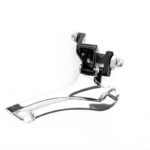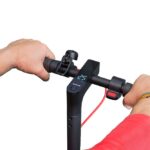In the world of cycling, technology has significantly enhanced the riding experience. One such advancement is the bike computer, a small bicycle device that provides cyclists with valuable data. Whether you’re a casual rider or a competitive cyclist, understanding the capabilities and benefits of bike computers can help you optimize your performance. This article explores what a bike computer is, its uses, and the pros and cons of wired vs. wireless bike computers to help you choose the best option for your needs.
What is a Bike Computer?
A bike or cycling computer is an electronic device that records and displays data related to your ride. Depending on the model, these devices can track various metrics such as speed, distance, time, altitude, heart rate, and GPS coordinates. Bike computers are essential for cyclists to monitor their performance, set goals, and improve their riding experience.
Uses of a Bike Computer
The primary use of a bike computer is to provide real-time data and feedback to cyclists. Here are some common uses:
Performance Tracking: Monitor speed, distance, and ride time to gauge performance improvements.
Navigation: GPS-enabled bike computers offer route planning and turn-by-turn navigation.
Training: Advanced models provide data on heart rate, cadence, and power output, aiding in structured training plans.
Safety: Some models include features like incident detection and live tracking, enhancing rider safety.
Wired vs Wireless Bike Computer
When choosing a bike computer, one critical decision is whether to use a wired or wireless model. Each type has its own set of advantages and disadvantages.
Wired Bike Computers
Pros:
- Reliability: Wired bike computers are generally more reliable as they do not suffer from signal interference or connectivity issues.
- Consistency: The direct connection ensures consistent data transmission without the risk of signal dropouts.
- Battery Life: Wired models have longer battery life since they do not rely on wireless transmission, which can be power-intensive.
Cons:
- Aesthetics and Installation: Wires can clutter the bike’s appearance and may be cumbersome, especially if you’re not technically inclined.
- Maintenance: The wires can be prone to damage or wear over time, requiring repairs or replacements.
- Limited Features: Wired bike computers often need advanced features in wireless models, such as smartphone connectivity or additional sensors.
Wireless Bike Computers
Pros:
- Ease of Installation: Wireless bike computers are easier to install as there are no wires to route around the bike frame.
- Clean Look: Wireless models offer a cleaner, more streamlined look without the clutter of wires.
- Advanced Features: Many wireless bike computers offer additional functionalities, such as Bluetooth or ANT+ connectivity, allowing integration with other devices and apps.
Cons:
- Signal Interference: Wireless bike computers can suffer from signal interference, which can cause inaccurate data readings or loss of connection.
- Battery Consumption: The wireless transmission requires more power, leading to shorter battery life than wired models.
- Price: Wireless models are generally more expensive due to their advanced technology and added features.
Choosing the Best Bike Computer for You
Consider your specific needs and preferences when deciding between a wired and wireless bike computer. If you prioritize reliability and do not mind the presence of wires, a wired bike computer might be the best choice. On the other hand, if you prefer a more streamlined setup with advanced features and easy installation, a wireless bike computer is likely more suitable.
Additionally, consider what features are most important to you. Are you looking for basic metrics like speed and distance or more advanced functionalities like GPS navigation and smartphone connectivity? Evaluating these factors will help you determine the best bike computers that fit your cycling goals.
In conclusion, bike computers, whether wired or wireless, provide invaluable data that can enhance your cycling experience. By understanding the benefits and drawbacks of each type, you can make an informed decision and choose the best option for your needs. Happy riding!





